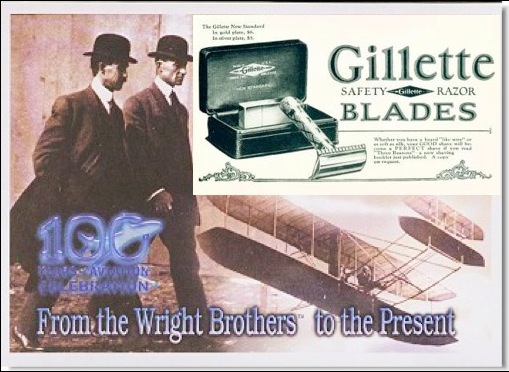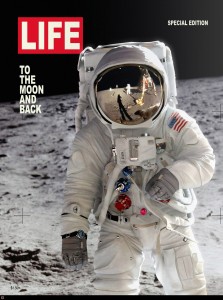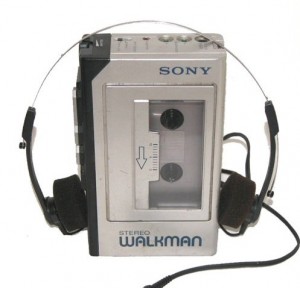 SEE THIS ON SCIENCE CREATIVE
SEE THIS ON SCIENCE CREATIVE
Picture yourself living a middle class life at the beginning of the last century. Let’s say the year is 1904. The times feel modern and technology is rapidly expanding and seemingly improving our lives. Amazing things are happening in this new century, back on December 17, 1903 the Wright brothers actually flew an engine-powered aeroplane – magnificent! Later, in 1904 a Canadian by the name of John E. Kennedy would define advertising as “salesmanship in printâ€. This would ensure from that point onward, new technology would be marketed as a product or benefit that every consumer needed – now.
The onslaught of new fangled technology such as radios, the new Gillette safety razors, vacuum cleaners and even Crayola Crayons had to be marketed and the public was soon immersed in the wonderment of being able to consume and live the life of modernity.
Back then there was a sense of excitement and a feeling of anticipation with the introduction of each new technological marvel. Because so much of what was becoming available could hardly have been imagined only the year before it was a magical and incredible time.
Of course marketing and advertising helped promote this “idealistic world” that new technology offered in ever-growing abundance. Over time consumers became accustomed to the “what’s new†marketing formula. As a result, what was once “new and incredible” soon became old, dated and years later would stand as a marker of history. Look at any old photograph and it’s the clothes and “products†around the subjects that truly dates the photo.
As the 20th century progressed and wars came (which accelerated technological advancement), marketers and advertisers continued to promote an ever-growing variety of “New” consumer goods with technological advancements that were always remarkable.
In the 50’s “New and Improved†became the standard approach to revitalizing products that worked just fine, but needed that extra boost to ensure customers didn’t become tired and bored of the same old thing. With market competition consumers expected more choices, therefore any new “breakthrough product†had to enrich and improve their lives in order to survive. Manufacturers and marketers continually produced new versions and new products that kept consumers satiated until the next big thing arrived. Each year the car companies released a new model and each year some kind of technological (often only mythological) improvement added to the mystique.
Advancements in technology always led the way in terms of piquing the consumer’s sense of awe. Landing on the moon in July, 1969 was proof that technology could make our dreams seem limitless.

Hollywood extended our dreams of the future by showcasing mind-boggling technological advancements that would someday ultimately allow us more time for leisure activities, or whatever we chose to do. Movies such as Star Wars, Star Trek and even the dark Blade Runner, presented the future with once unfathomable new technology that, over time, collectively helped desensitize our sense of wonderment.
What was once inconceivable or unimaginable was now being portrayed as possible or even ordinary. Remember when Star Wars (and to a lesser extent 2001: A Space Odyssey) set the benchmark for all space/Sci-fi movies that followed? If the production values fell short for any Sci-fi film after that period the public just didn’t believe it.
The iPod and the iPhone represented the same kind of benchmarks in the eyes of the mass consumer. It was expected that for others to compete they had to match or beat the leader in technology. Sony found out the hard way that the once dominant Walkman could be instantly replaced by the next big thing.
Hence, over time consumers became accustomed to being “wowed†for a short time and then the new technology quickly became a “given†as it neatly wove itself into our everyday lives. The record player gave way to the CD player, which was replaced by the iPod, and soon “digital everything” became the norm. Steve Jobs announcement of the iPhone in early 2007 was a huge game changer that represented THE leading edge in consumer technology for that month. Now, along with numerous other smart phones, the iPad and whatever else is around the corner – our sense of amazement has been reduced to those fleeting moments that include the anticipation of purchase and the exaltation of first using the product. Then, maybe after a few days, we just carry on as though that new technology had always been there. Anyone with a smart phone knows just how fast we become accustomed to the new technology.
To address the shorter product lifecycle and the consumers evaporating sense of astonishment the marketing, advertising, social media and PR managers continue to tirelessly massage the message and offer “new” improvements that consumers expect and often demand – otherwise the technology gets left behind like the Walkman or the VCR.

Cisco’s 2009 vision of how we may soon shop seems more than plausible due to movies such as Minority Report and interactive games such as Wii. Watching the video the viewer will probably say “Cool, when is this coming out?” and then seconds later click on the next item.ga
So now we’re approaching 2011. Remember just a few years ago how long it took you to become accustomed to your brand new Wii or your flat screen TV or the games you play in your computer, as there are many games now for this, including casino games you can find at the skycrown casino to have fun and make money. That sense of excitement (like Christmas) was soon replaced by “Oh that, it ain’t no big thing.†Well, that is until it got lost, stolen or broke, then we missed it immediately.